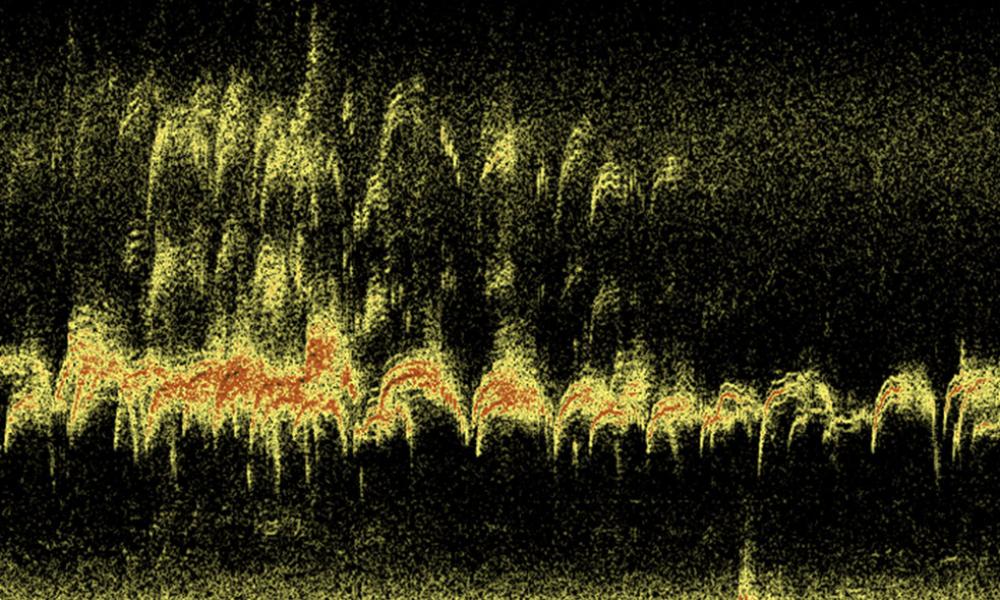What is acoustic monitoring?
Ecologists and conservation researchers have a long history of using sound to study wildlife, from identifying birdsong by ear in the field, to surveying bats with handheld detectors, to using state-of-the-art remote sound recorders to monitor the sounds of animals and ecosystems. Many animals produce sound for communication and navigation, from birds and bats to marine mammals, fish, amphibians and many invertebrates. By doing this, they broadcast information about themselves into their environment. For researchers, this can offer rich data about where species are, how big their populations are, and what they’re doing. This makes remote sound recorders – often called ‘acoustic sensors’ – potentially a useful, cost-effective way for ecologists to survey wildlife populations, animal behaviour and ecological communities.
the modern acoustic sensor
 In recent years the popularity of this technology, known as passive acoustic monitoring (or just ‘acoustic monitoring’) has grown very rapidly. This has happened because of recent advances in the technology, which has taken advantage of innovations for consumer technology such as smartphones, often taking advantage of innovations for consumer tech like smartphones: the hardware has become smaller and cheaper, and audio analysis software has become much more sophisticated.
In recent years the popularity of this technology, known as passive acoustic monitoring (or just ‘acoustic monitoring’) has grown very rapidly. This has happened because of recent advances in the technology, which has taken advantage of innovations for consumer technology such as smartphones, often taking advantage of innovations for consumer tech like smartphones: the hardware has become smaller and cheaper, and audio analysis software has become much more sophisticated.
This means that portable, weatherproof acoustic sensors for wildlife monitoring are quickly dropping in cost, making it feasible to use them for a variety of ecology and conservation research. Simultaneously, new developments in machine learning and computer vision are making it possible to automatically extract useful ecological information from many hours of sound recordings.
Animals use sound for communication, echolocation, sexual display, and territorial defense, and bioacoustic monitoring involves the recording of those sounds to infer animal distribution, physiological state, abundance, and behaviour.

NEW OPPORTUNITIES
NEW OPPORTUNITIES
This emerging technology offers a wealth of opportunities for ecology and conservation research.
Similarly to camera traps, many remote acoustic sensors can be deployed in the field for many weeks or months, collecting recordings of wildlife and their surroundings in a non-invasive way. These can be analysed to provide information on species distributions, behaviour and populations, to build up a picture of communities of vocalising animals in a survey area, and to understand the relationship between animals and their acoustic environment (the ‘soundscape’). These approaches are increasingly used in applied conservation, for monitoring endangered species, understanding habitat use, and listening for sounds associated with illegal activity such as gunshots and chainsaw noise.

PLANNING AN ACOUSTIC SURVEY
PLANNING AN ACOUSTIC SURVEY
Acoustic monitoring technology is becoming more and more accessible, but still involves major practical challenges. For example, one key issue is how to deal with the huge amounts of data collected by acoustic sensors: the audio recordings must first be processed to extract relevant sounds (such as wildlife calls) from the background noise. Manually this is very labour-intensive, and automated tools are often unavailable, making it crucially important to plan for this in advance.
Problems like these can be difficult to anticipate ahead of time, so WWF-UK have developed these best-practice guidelines. These aim to provide all the introductory information needed to understand the concepts behind acoustic monitoring, where it can be an effective tool, and how to address many of its frustrations and difficulties. Below you can take our online test to learn where this technology may work for you, or scroll to the bottom of the page to download the full guidelines booklet.